Nokia NRS II Composite Exam: OSPF version Questions and Answers
If a Router originates a type 1 router LSA with the E bit set what types of areas can it belong to? Select all that apply.
Click on the exhibit.
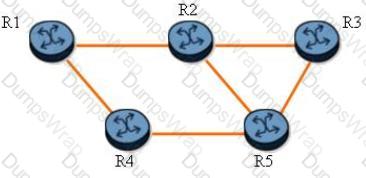
An LSP traverses the path R1-R2-R3. With one-to-one fast reroute enabled, which router becomes a DMP for the detour tunnels?
Which of the following regarding label population is TRUE?
Click the exhibit.
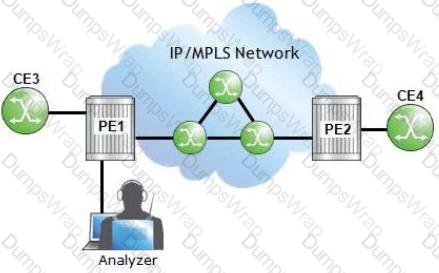
The operator at PE1 wants to analyze the traffic between CE4 and PE2. On an Nokia 7750 SR, which of the following is required as part of the configuration?
When redistributing OSPF into RIP V2 what must be taken into consideration for the redistribution to take place?
On Nokia 7750 SR OS, routing information between the CE and PE can be exchanged using the following methods.
Click the exhibit.

Router R6 is a route reflector with clients R1, R2 and R5. Router R3 advertises the prefix 192.168.1.0/27 to routers R1, R2 and R5. How many routes for prefix 192.168.1.0/27 will router R6 receive?
Which of the following statements best describes the function of an OSPF Type 4 LSA?
Facility fast reroute with node protection is enabled for an LSP, which of the following is FALSE?
In an OSPF environment, what must a router receive after it sends out an update?
Which of the following about an ERO in an RSVP PATH message is FALSE?
Which of the following about VPRN VRF tables is FALSE?
Click the exhibit button.
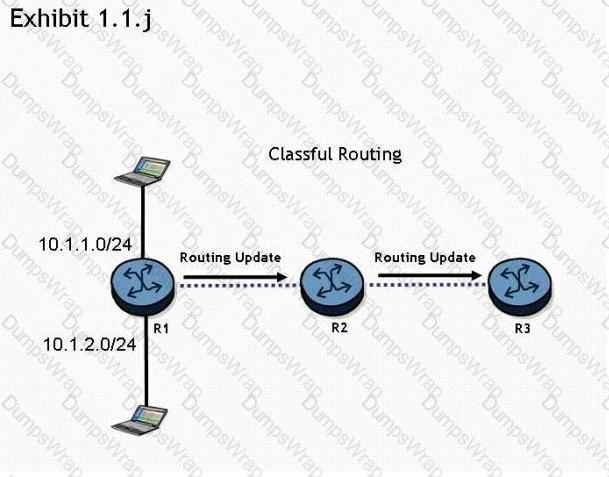
Routers R1 „ R2, and R3 are running a classful routing protocol between them. Assuming that router R1 advertises all directly connected networks, how will these networks be represented in router R3's routing table?
A network consists of four PE routers. A customer requires a VPLS and has sites connected to each PE. The VPLS is fully meshed using IP/MPLS. How many SDPs must be configured on each PE?
Which regular expression will match the AS Path of a route originating in remote AS 65100?
Click on the exhibit.

This LSP terminates on a system IP address. What is the system address of the destination node?
Click on the exhibit.
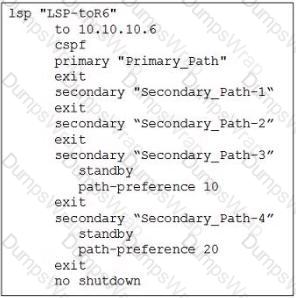
If the primary path goes down, which secondary LSP path will the head-end router select first?
Which of the following is NOT a goal of BGP routing policies?
Which of the following comparisons between E-pipes and VPLSes is FALSE?
Which of the following statements regarding Internet Exchange Points is FALSE?
Which of the following about LDP sessions is TRUE?
Which of the following about the components of a distributed service on the Nokia 7750 SR is TRUE?

What is the metric and maximum routable value for RIP?
Which MPLS label mode saves label mappings received from all peer LSRs?
What are some of the characteristics of Nokia's implementation of non-stop routing? (Choose two)
On which object is ADSPEC enabled?
Click on the exhibit.

The route table on router R2 shows the system address of router R5 but it does not show any of the interfaces from the non-OSPF area.
What may be causing this?
Click the exhibit.

Over which BGP session will router B learn the 10.1.1.0/24 prefix?
Which of the following is a characteristic of LDP Hello messages?
By default, how does a VPLS handle a tagged frame received at the ingress of a null SAP on an Nokia 7750 SR?
Click the exhibit button.
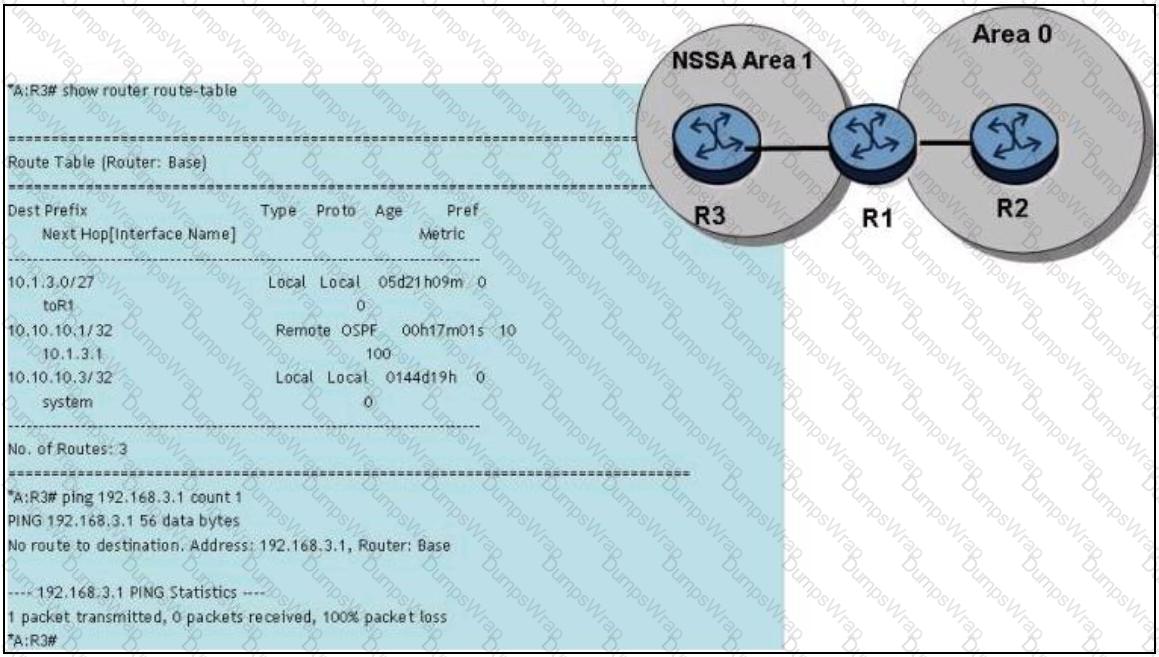
192.168.3.1 is a loopback interface on router R2 and is distributed to OSPF area 0, but the ping fails from router R3. Which of the following is a possible solution to the problem?
Click the exhibit.
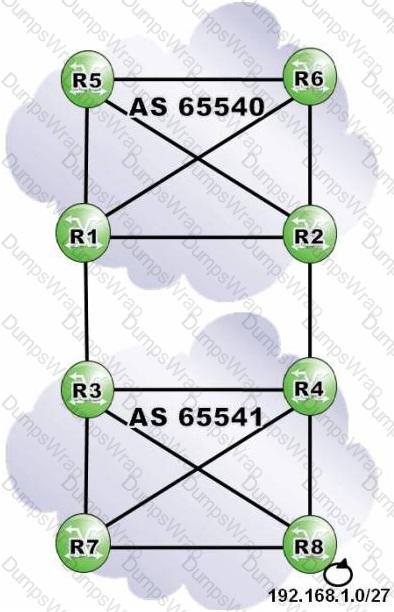
Router R2 receives a route to 192.168.1.0/27 from router R4, and sets the local preference to 110. Router R1 receives a route to 192.168.1.0/27 from router R3, and sets the local preference to 80. Both ASs have a full iBGP mesh. What path does traffic destined to 192.168.1.0/27 take from router R1?
Click the exhibit.

The CEs use BGP and export policies to advertise their local prefixes with the VPRN on their PEs. If the VPRN is functioning properly, which of the following commands will succeed when performed on router R1?
A router receives an OSPF database description packet from a neighbor that references an LSA, which is already in the router's LSDB. The sequence number in the DBD packet is lower than the sequence number of the LSA in the LSDB.
What action does the router take?
Which of the following about the Nokia 7750 SR sdp-ping is TRUE?
Which of the following is NOT a characteristic of MPLS?
What kind of attribute is the aggregator?
Which of the following is TRUE when the explicit null is implemented?
Which of the following is NOT considered an option of export policies?
Click the exhibit button.
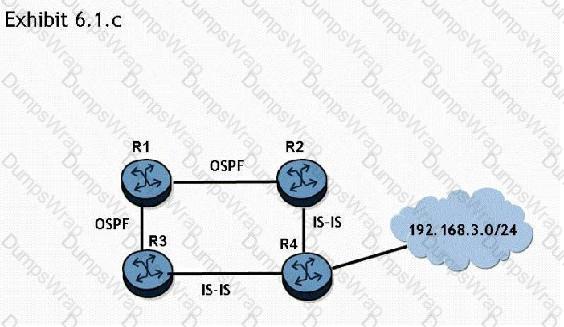
If router R2 redistributes the IS-IS route to 192.168.3.0/24 into OSPF, router R3 preference of these two routes? Choose two answers.
On an Nokia 7750 SR, what is the recommended approach for making sure that MTUs between a VPLS and its spoke IES termination match?
From what range are 16-bit private AS numbers selected?
An SDP using GRE encapsulation is configured for an E-pipe service. The network port used by the SDP has an MTU of 8000. What value does the SDP path MTU have by default on an Nokia 7750 SR?
Click on the exhibit.
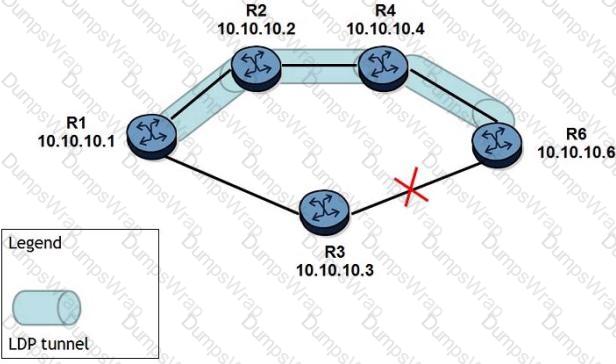
An LDP tunnel is established on R1-R2-R4-R6 because the link between routers R3 and R6 is down. With the LDP-IGP Sync feature enabled, what happens immediately after the link is restored?

